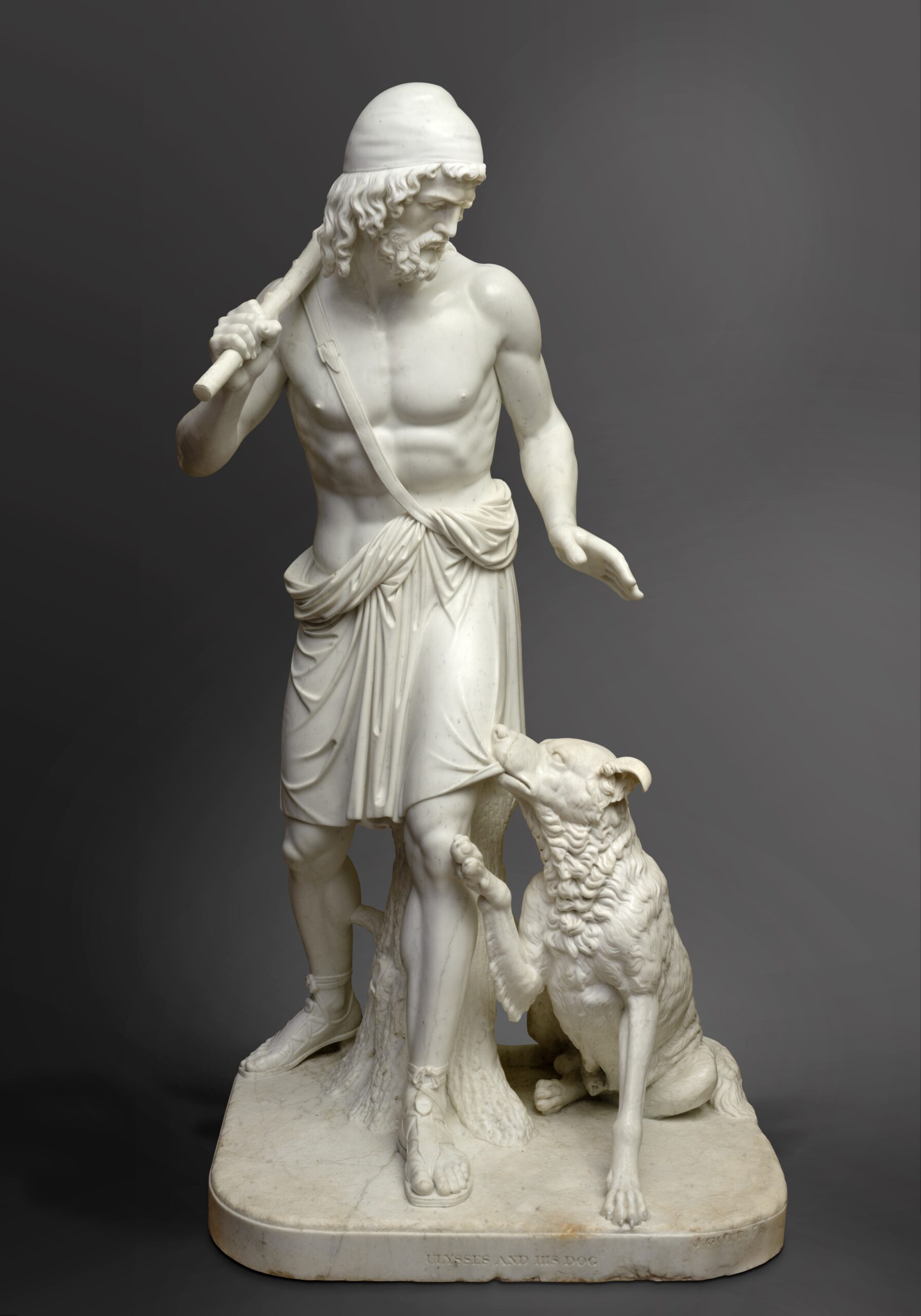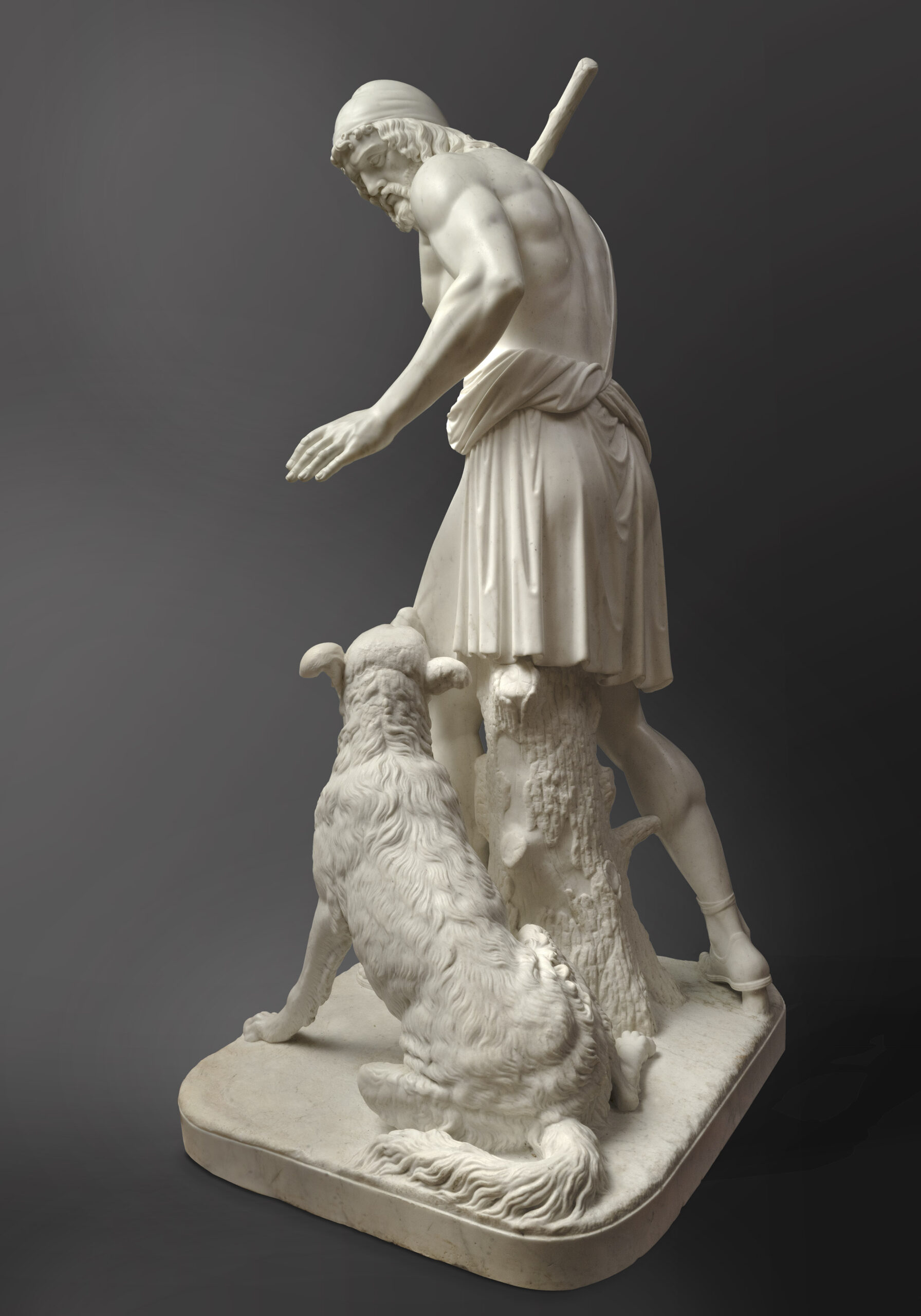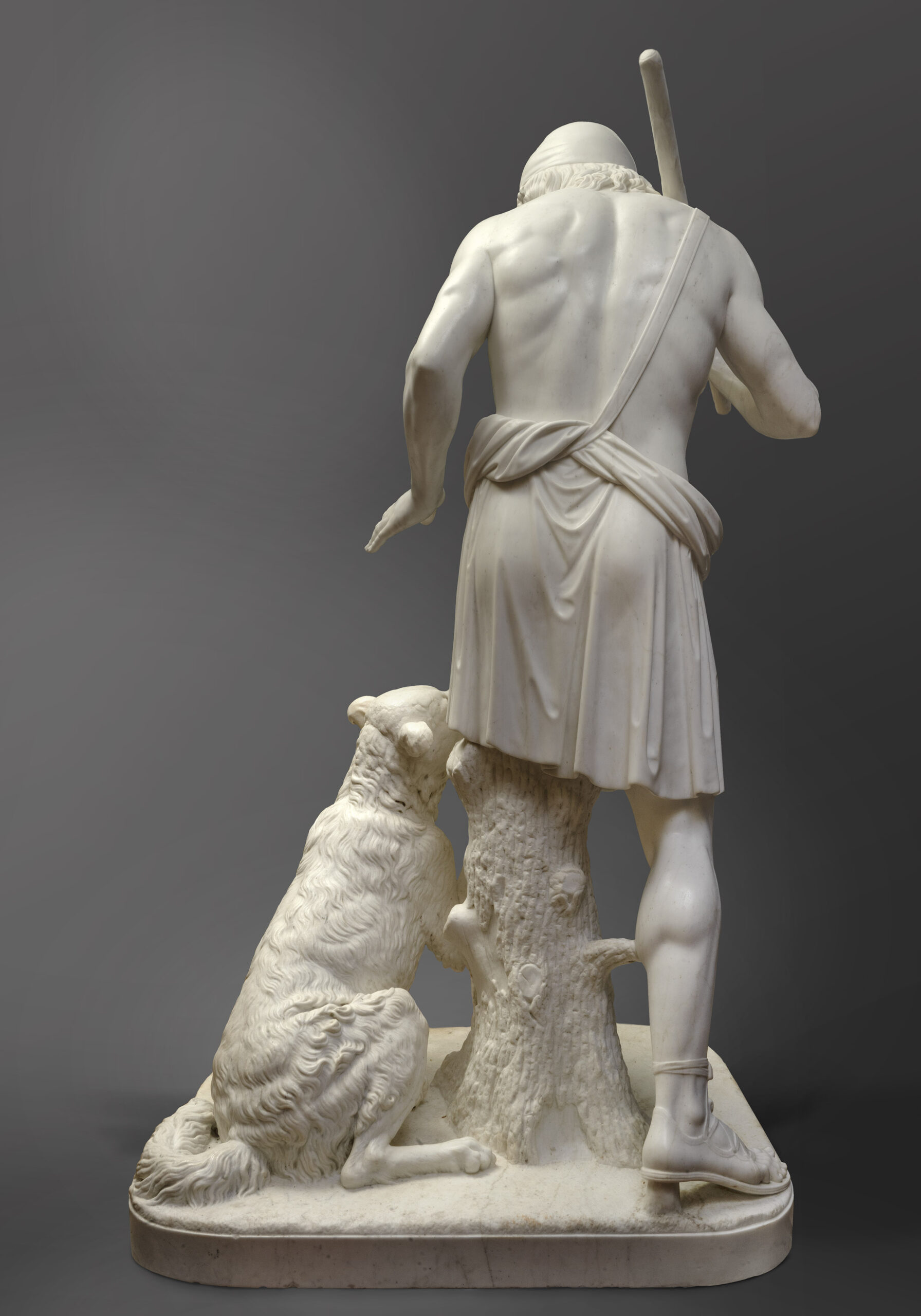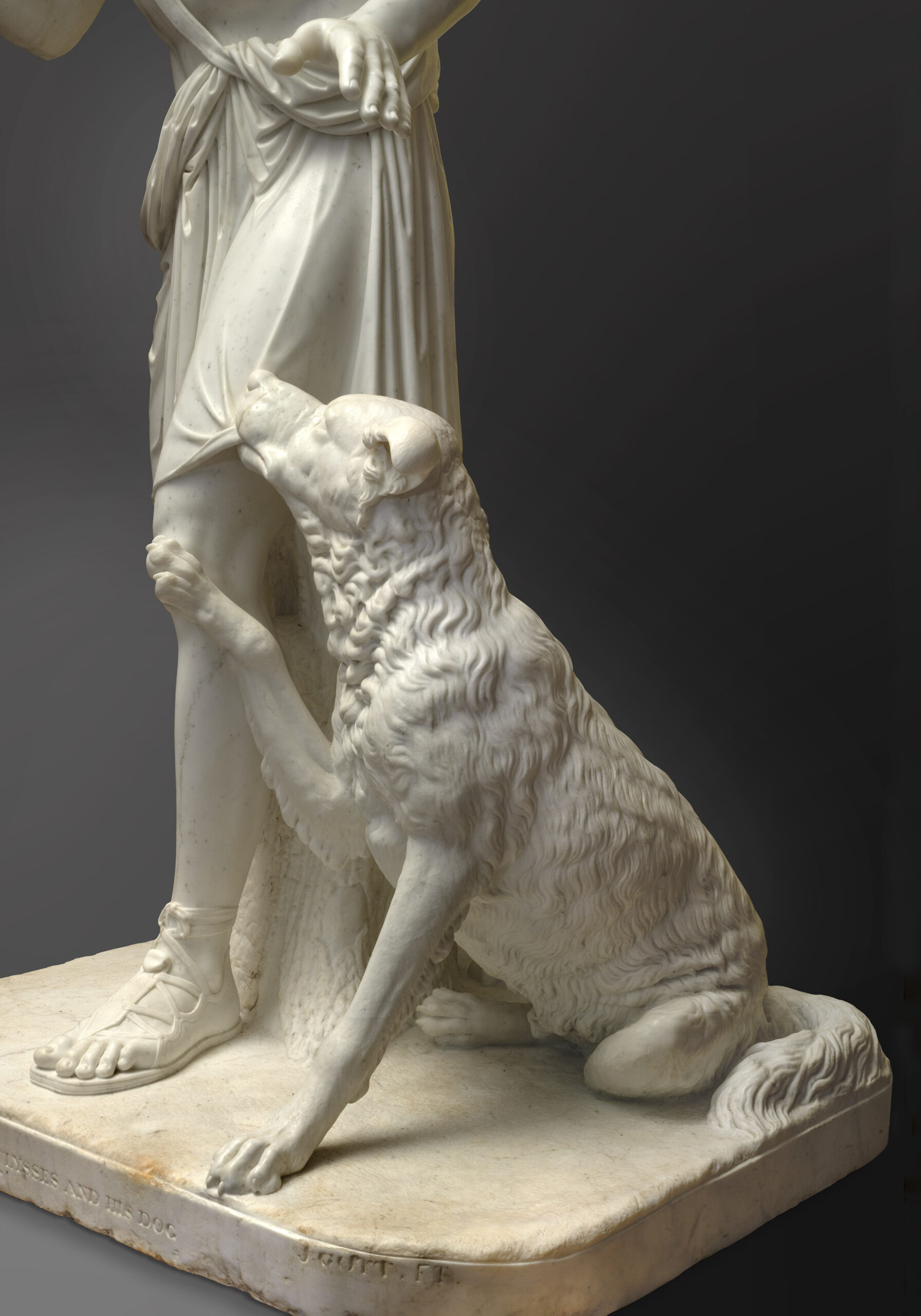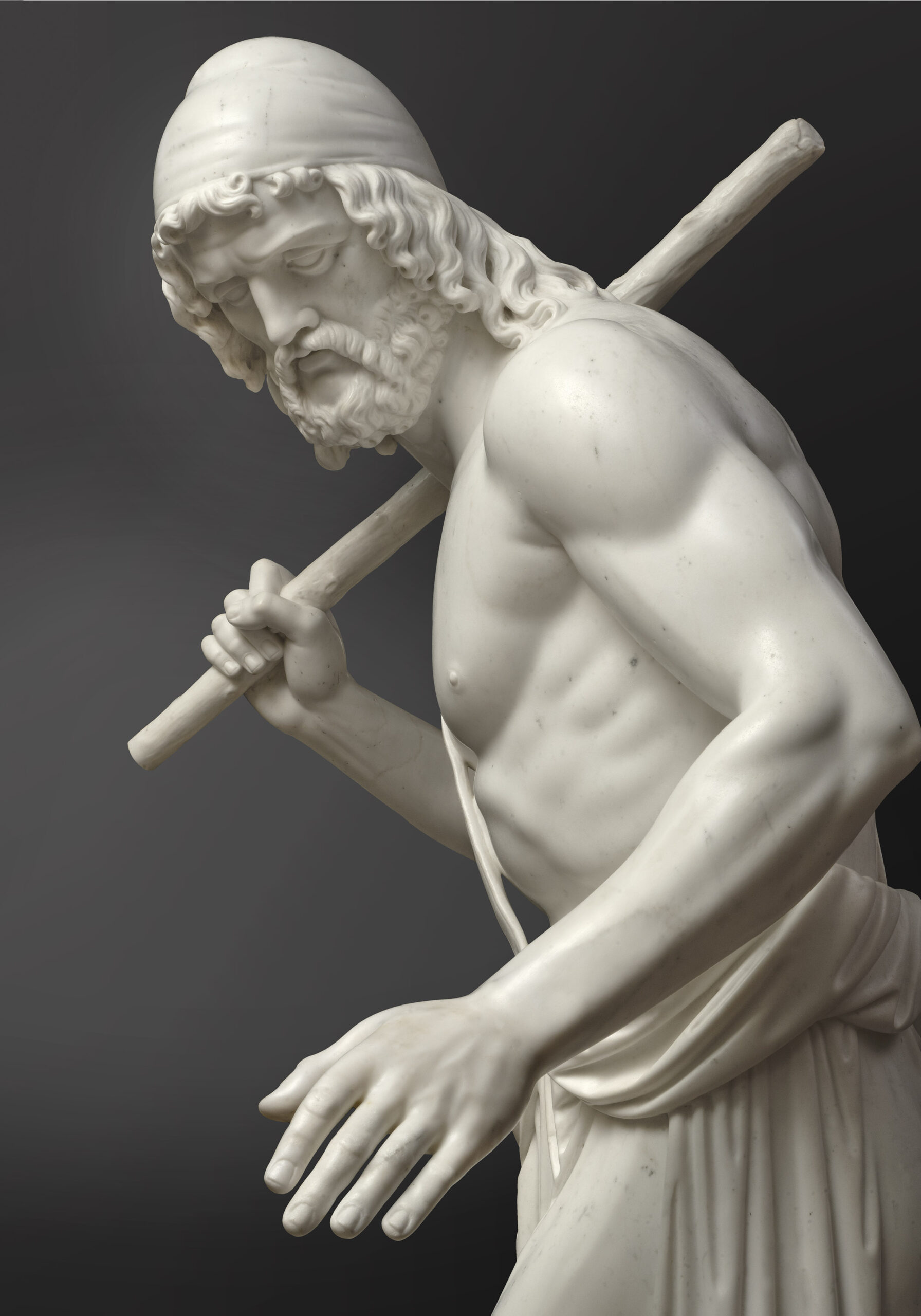ULYSSES & HIS DOG
JOSEPH GOTT (1785-1860)
British
Date : ca. 1825
Dimensions : 185,5 x 115 x 97 cm
Material : White Carrara marble
Signature : “J. GOTT. FT”
Titled : “ULYSSES AND HIS DOG”
Provenance : Private collection of the Rawson family, Nidd Hall Manor, England.
Historical and artistic context
This profoundly moving sculpture captures one of the most emotional moments in Homer’s Odyssey: the return of Ulysses to Ithaca. There, his faithful dog Argos—now aged and frail—is the first to recognize him, despite his disguise. Carved in white Carrara marble with exceptional sensitivity, the composition immortalizes this silent moment of recognition, embodying a gesture of unwavering loyalty and enduring affection.
Joseph Gott portrays Ulysses as a weary traveler, his gaze gently turned toward Argos. The dog, with touching tenderness, lifts one paw and presses his muzzle against his master’s leg. The detailed rendering of the fur, the subtle tension in the dog’s posture, and the solemn expression of Ulysses reflect the sculptor’s understated virtuosity.
The work seamlessly blends Neoclassical clarity with a restrained Romantic sentiment, evoking themes of fidelity, memory, and the quiet emotion of reunion. The polished surface of the marble enhances the contrast between Ulysses’s stoic figure and the weakened form of the aging dog, symbolizing both the passage of time and enduring devotion.
Beyond its emotional resonance, the sculpture exemplifies the refinement of early 19th-century British sculpture. Deeply influenced by both Neoclassicism and Romanticism, Gott merges anatomical accuracy with a narrative that is at once intimate and timeless.
Ultimately, the silent exchange between man and animal invites reflection—not only on reunion, but on recognition, loss, and the abiding nature of love. Through its stillness and restraint, this sculpture becomes a meditative tribute to loyalty and the human experience of memory.
Literature :
-
London Metropolitan Archive: Keats House Papers, Severn’s correspondence with his parents and siblings, in S. Brown, Joseph Severn, A Life: The Rewards of Friendship, Oxford, 2009, p.147
-
T.F. FRIEDMAN, ‘Aspects of Nineteenth Century Sculpture in Leeds. I. The Northern Society Exhibitions’, Leeds Arts Calendar, no. 69, 1971, pp. 22–28
-
T.F. FRIEDMAN, ‘Aspects of Nineteeth Century Sculpture in Leeds. II. Patronage of the Benjamin Gott Family’, Leeds Arts Calendar, no. 70, 1972, pp. 18–25
-
T. FRIEDMAN and T. STEVENS, Joseph Gott, 1786-1860, Sculptor, exh. cat., Leeds and Liverpool, 1972
-
H. HONOUR, ‘Sir Thomas Lawrence and Benjamin Gott’, Leeds Arts Calendar, vol. 7, no. 25, Spring 1954, pp. 13–24 V.M.E. Lovell, ‘Benjamin Gott of Armley House, Leeds,1762-1840; Patron of the Arts’, Miscellany, vol 18, part 2 A.Wells-Cole, ‘John Flaxman and Benjamin Gott of Armley House, Leeds’, Leeds Arts Calendar, no. 63, 1968, pp. 21–24
-
Canova Archives, Museo Civico, Bassano. Letter from Sir Thomas Lawrence V.550 /3601
-
Transactions of the Society Instituted at London for the Encouragement of the Arts, Manufactures and Commerce London: 1783-1851, RSA, PR.GE/112/13/11-67, vol 26,1808, 18
-
The Athenaeum, 28 January 1860, p.139, in T. Friedman and T. Stevens, Joseph Gott, 1786-1860, Sculptor, exh. cat. (Leeds and Liverpool: 1972), p. 56
-
Lawrence Papers, Royal Academy of Arts, ‘Thomas Unwins to Sir Thomas Lawrence’, LAW/4/341, p.103

